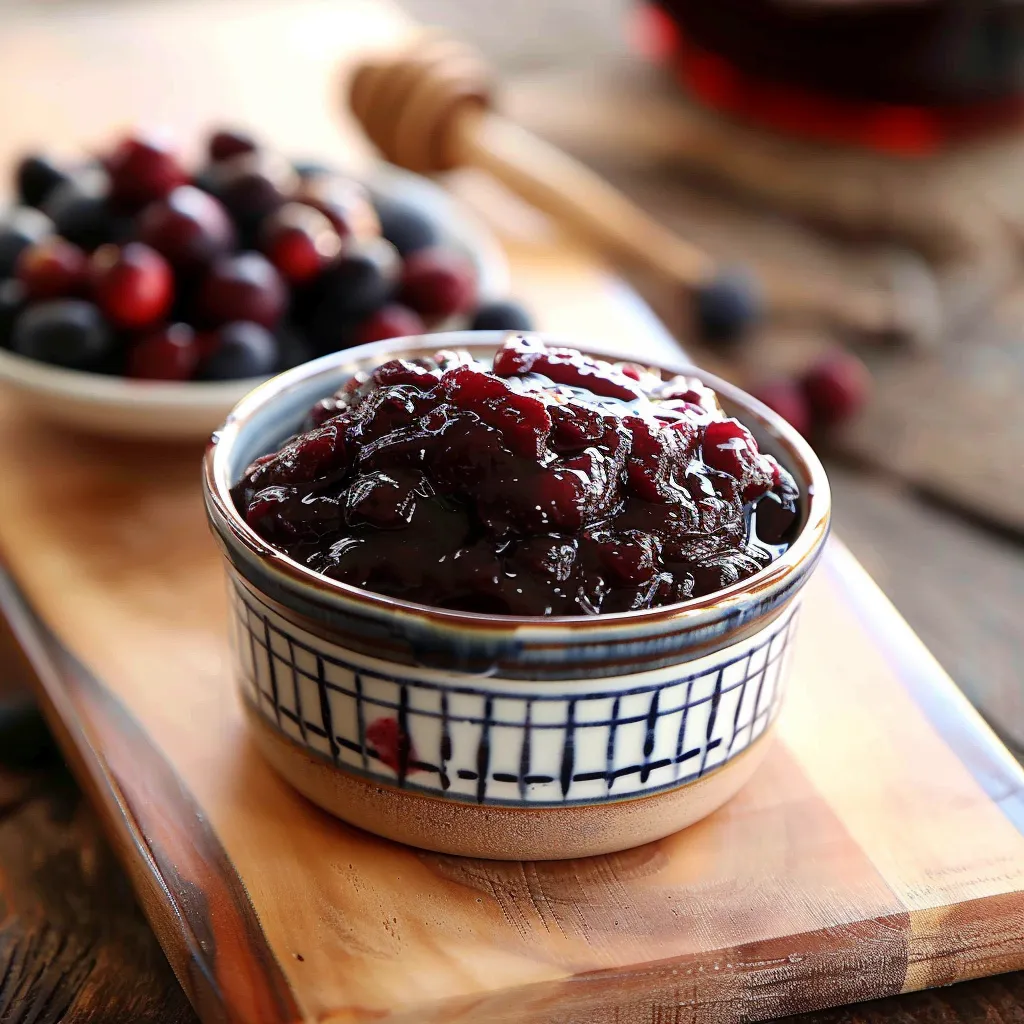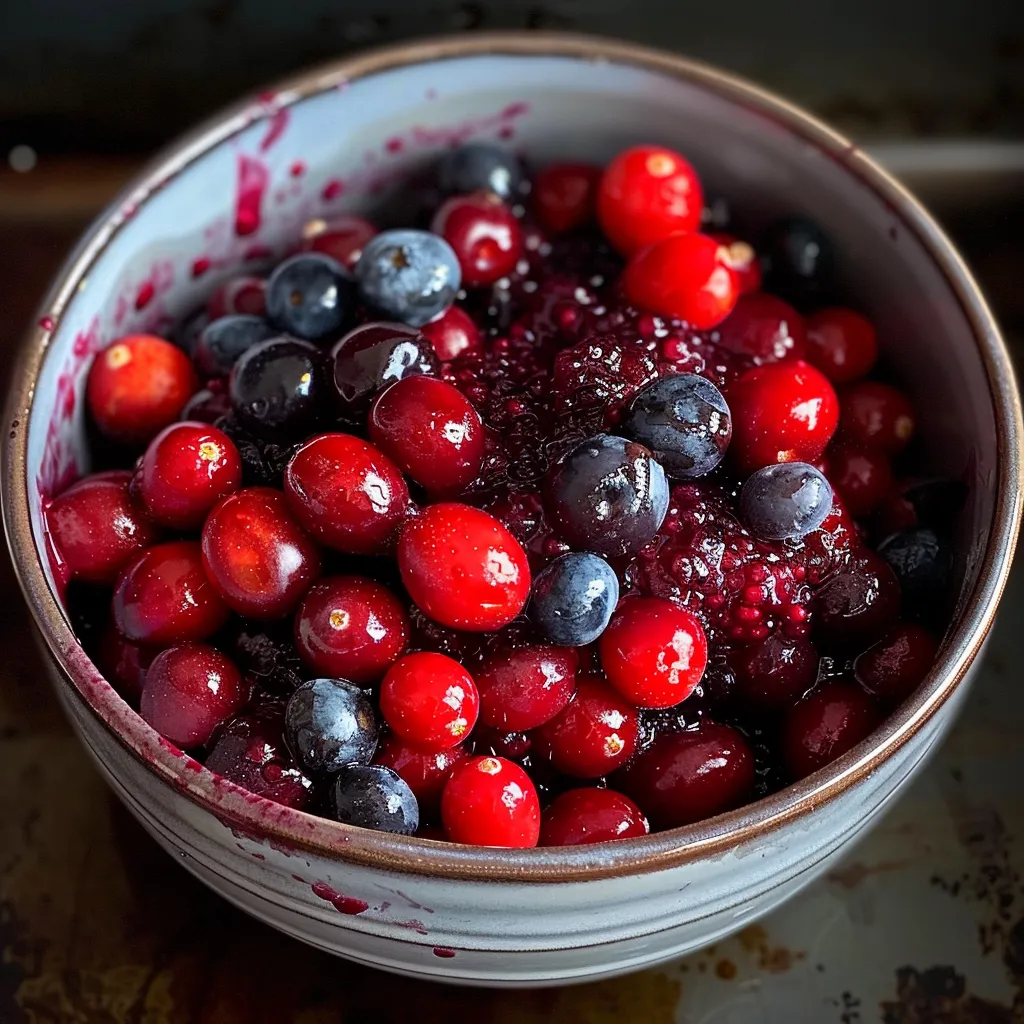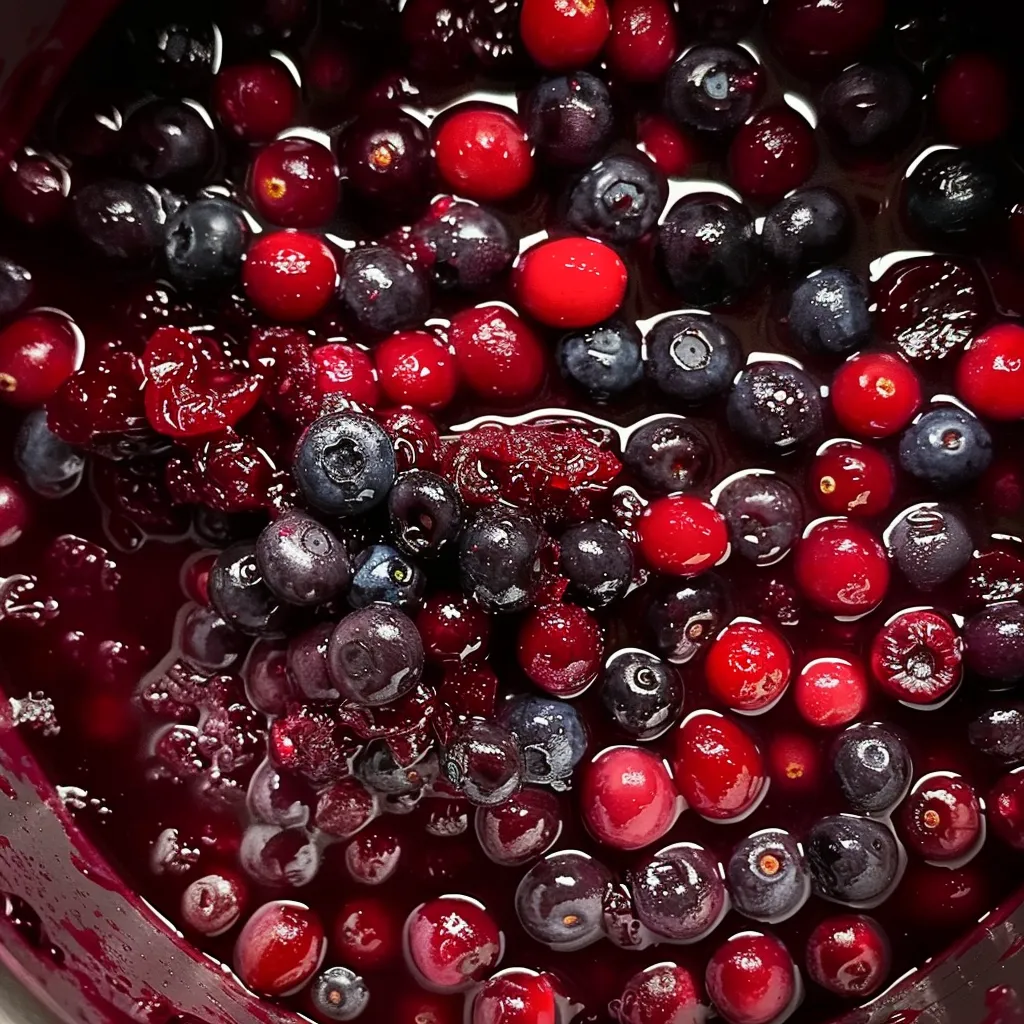 Pin it
Pin it
Every spoonful of Wojapi tells a story of Native American cooking heritage through its smooth, silky consistency. This deep-colored berry sauce packs summer fruits' concentrated goodness, striking a nice balance between tangy and sweet. I first tried making this after a dinner with my Lakota buddy who shared this tradition, and now I truly get why so many tribal communities have treasured this dish for ages.
Key Ingredients
- Berry Mix: Old-school versions typically had chokecherries, buffalo berries or juneberries, but you'll get amazing results mixing cherries, blueberries and cranberries for that perfect sweet-tart combo.
- Touch of Sweetness: The old ways relied mostly on the berries' own sweetness. I add just a bit of honey to bring out their natural taste without going overboard.
- Patience: Cooking it slowly brings out all the flavors and lets the natural thickeners in the fruit work their magic.
 Pin it
Pin it
Step-By-Step Guide
- Picking Your Berries
- Mix different kinds for better flavor.
- Make sure to throw in something tangy like cranberries.
- You can use frozen berries straight from the freezer.
- Don't buy berries that come with added sugar stuff.
- Taking It Slow
- Dump your berries right into the pot.
- Keep the heat down low so flavors can slowly come out.
- Don't add water – just wait and you'll get the right thickness.
- Stir now and then to make sure everything cooks evenly.
- Getting The Sweetness Right
- Let the berries break down completely before you taste test.
- Start with a tablespoon of sweetener and go from there.
- Give it time between adding more so the sweetness can spread through.
- Keep in mind it'll taste sweeter after it cools down.
- Making It Just Right
- Think about how smooth or chunky you want it.
- For the authentic feel, leave some berry chunks in there.
- If blending, do quick pulses instead of running it non-stop.
- It'll get thicker as it cools down.
Traditional Importance
Wojapi isn't just tasty food – it's a living link to Native cooking traditions that have fed communities for countless years. People would serve this sauce during special ceremonies and gatherings, made from berries that everyone helped collect and save.
Great Combos
Though it's traditionally eaten with fry bread, this sauce works with tons of different foods. I really like putting it on roasted wild meats, where the fruit's tanginess cuts through the rich meat flavors perfectly.
Pro Kitchen Tricks
- Go with a thick-bottomed pan: This stops burning if you're not using a slow cooker.
- Pour into ice cube trays: So you can grab small amounts when needed.
- For fancy dinners: Toss in some crushed juniper berries while cooking.
This basic sauce packs amazing flavors and deep cultural meaning in each bite. When I make Wojapi, I feel connected to cooking methods that honor ingredients and let their natural goodness shine through. Watching ordinary berries slowly turn into something amazing feels almost magical – reminding me that the most meaningful dishes often come from the simplest recipes.
 Pin it
Pin it
Frequently Asked Questions
- → What foods pair well with Wojapi?
- Traditionally served with fry bread, Wojapi is also great on pancakes, meats, ice cream, or even as a side dip.
- → Can I swap out the berries?
- Absolutely. Try using chokecherries, juneberries, blackberries, or raspberries based on what you have.
- → How long will Wojapi stay fresh?
- Keep Wojapi in an airtight container in the fridge for up to two weeks.
- → Do I have to use a slow cooker?
- Nope. You can simmer it on your stovetop over low heat for 1-2 hours, stirring occasionally, until the berries break apart.
- → Is honey the only sweetener for Wojapi?
- Not necessarily. Traditionally, natural sweeteners were used, but you can try maple syrup or a bit of sugar if you'd like.
